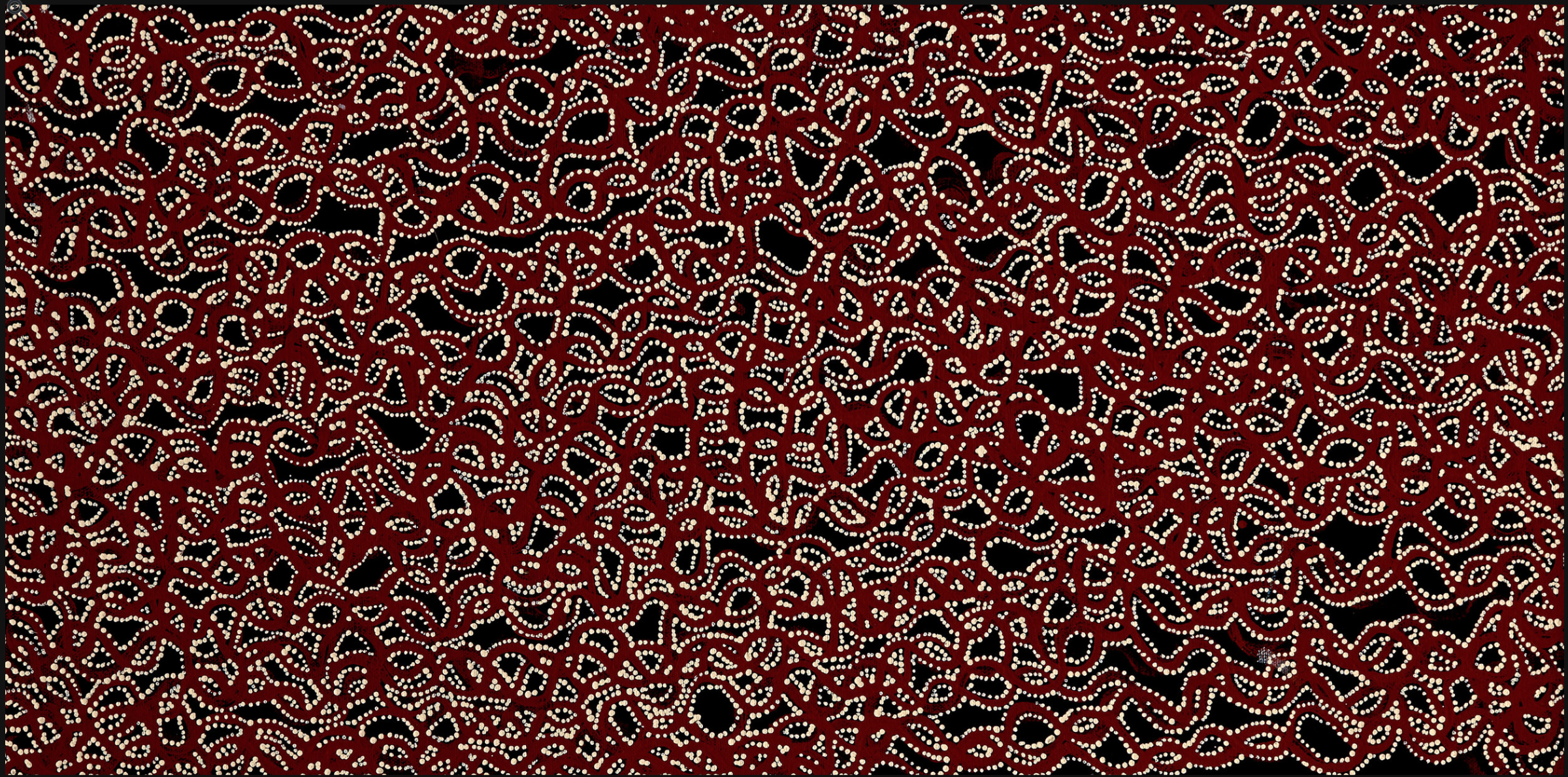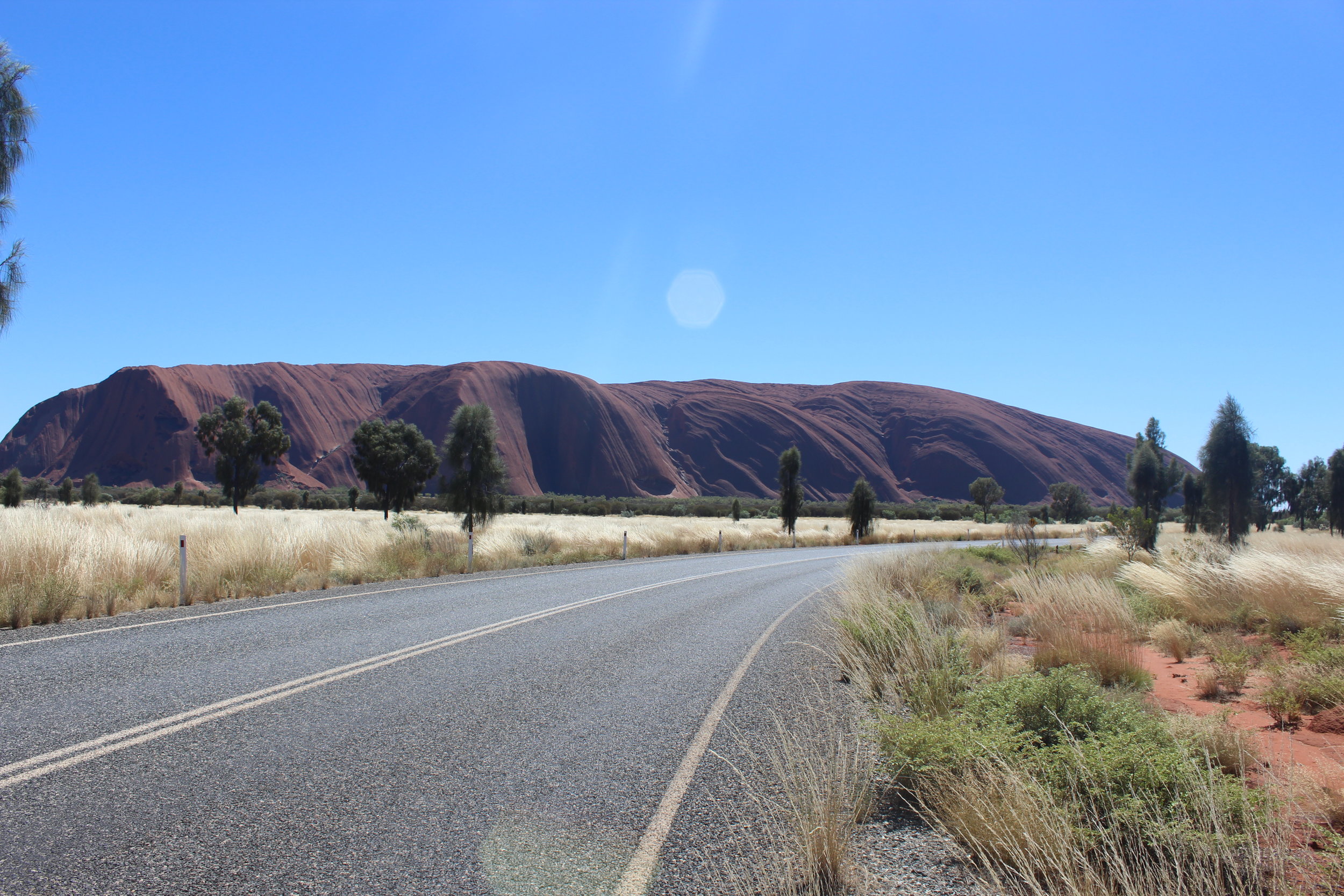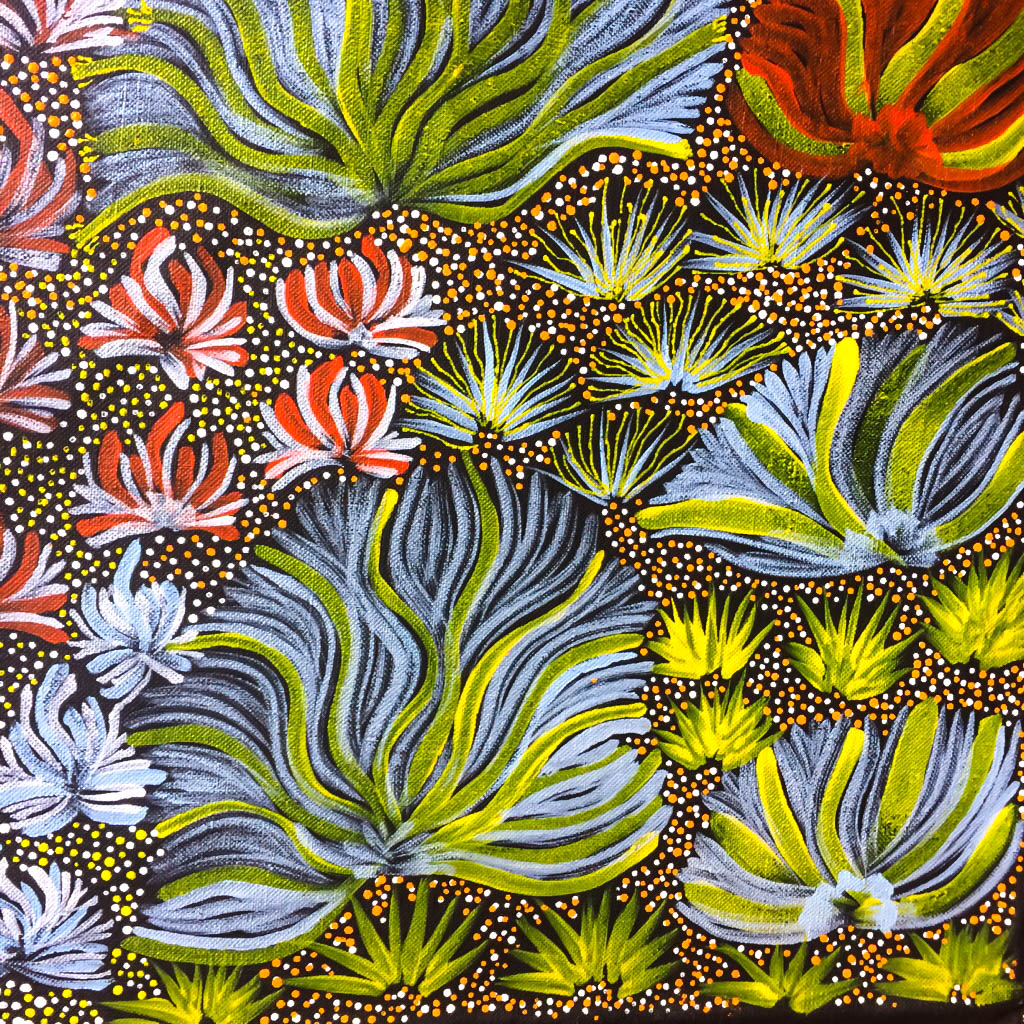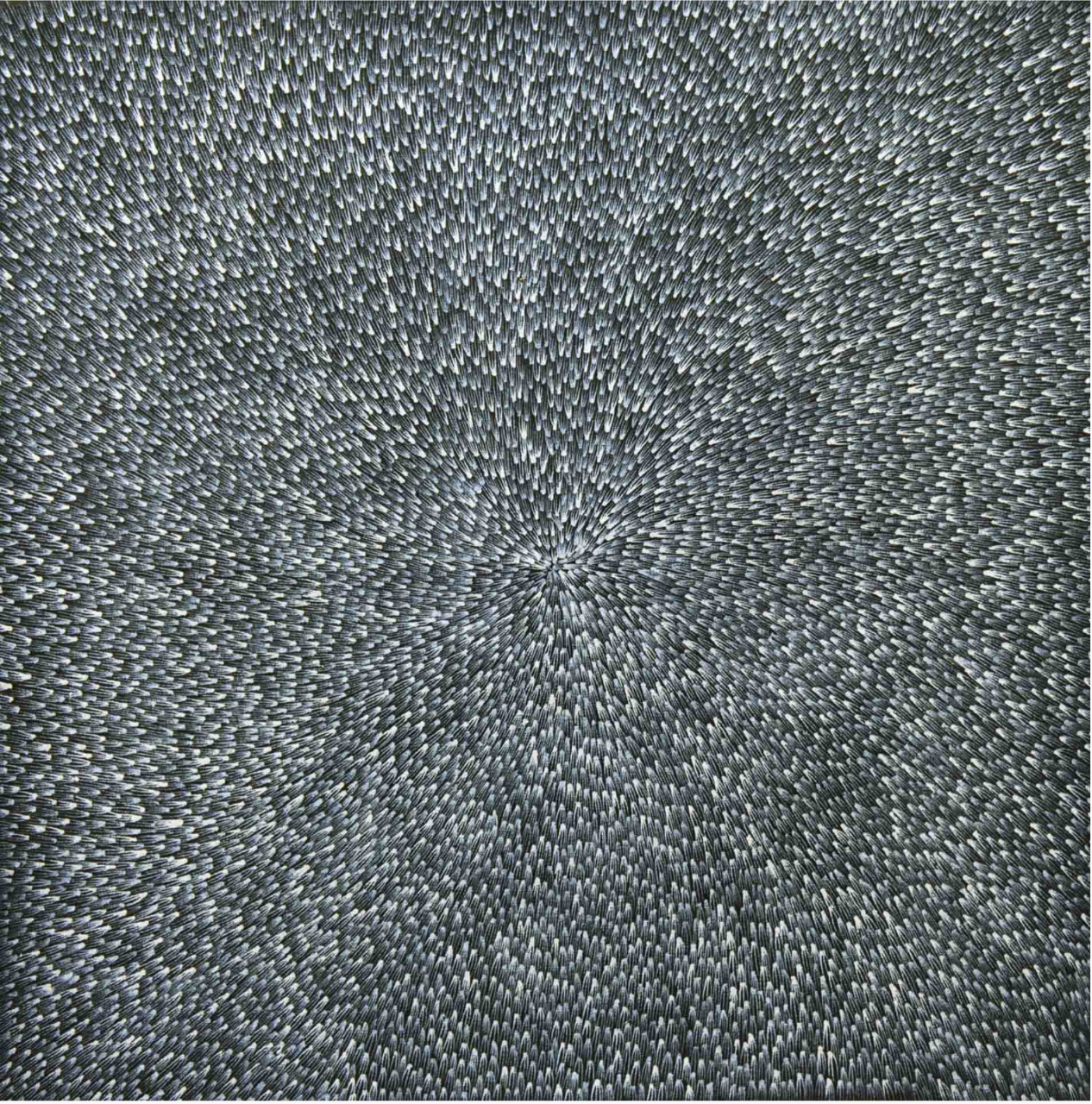Papunya Tula is the legendary site where the contemporary Aboriginal art movement bloomed becoming famous for its Western Desert dot art.
Amongst the different displaced Western Desert people's brought to Papunya Tula (Tula meaning small hill where a Honey ant dreaming sits) were Tommy Watson, Clifford Possum and Ningura Napurrula, each of whom went on to become wildly successful international artists.
The original company now operates from Alice Springs but we paid a visit to the existing art centre and found some of the sacred iconography depicted in the early works honoured while developing new interpretations of their ancient Dreamtime stories.
We had to keep a respectful distance while photographing the artists. Close up the paintings were breathtaking. Below is the landscape around the art centre.





















